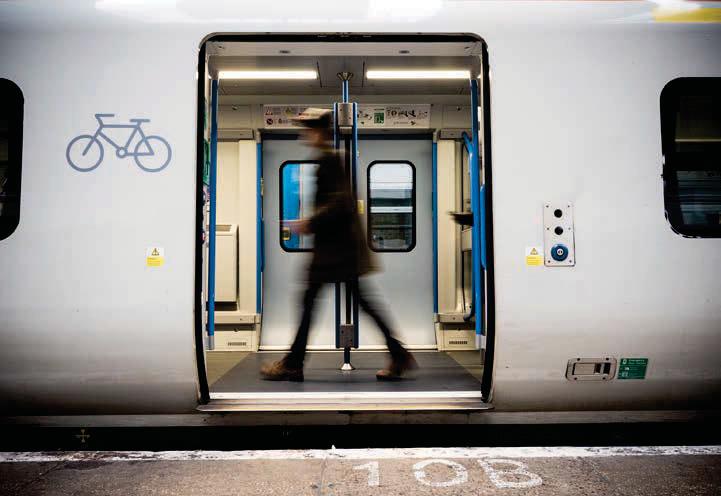
1 Use motion blur
Thanks to modern in-camera stabilisation systems, you don't always have to set up a tripod to use shutter speeds long enough to combine motion blur with sharp details in street photography. Ross Grieve is a portrait, commercial, and street photographer, and a Lumix Ambassador, and says, 'I love to shoot at 1/15sec to capture the blur of passers-by. I shoot in manual-exposure mode, so I have full control, but the shutter speed is the key to capturing these motion-blur shots. I vary the sensitivity (ISO) setting depending upon the light conditions. I shoot handheld but my Lumix GX9's stabilisation keeps the buildings and stationary objects sharp while anything moving is blurred.' Ross Grieve, www.rossgrieve.com
2 How wide should you go?
Lenses are classed as wideangle optics when they capture a wider angle of view than we see with our naked eyes. Our eyes are equivalent to a lens with a focal length of around 43mm on a full-frame camera or 28mm on an APS-C format model, so any lens shorter than that is a wideangle. 35mm lenses and their APS-C format equivalent (23mm) are very popular for a wide range of photography genres, but especially the street. Landscape photographers tend to prefer something a bit wider still, perhaps 24mm or 21mm, or occasionally even shorter. Corrected 12-24mm lenses are also popular, however uncorrected fisheye lenses that produce images with dramatic curves or even circular images at focal lengths as short as 8mm, are best used sparingly.
3 Activate your camera's electronic level
With a wide angle of view, it can be hard to keep an eye on the horizon so it often ends up a little wonky. Thankfully, most cameras have an electronic level which you can activate to help with keeping the horizon level. Many electronic levels also indicate if the camera is tipped slightly up or down this can help to avoid converging verticals.
This story is from the September 13, 2022 edition of Amateur Photographer.
Start your 7-day Magzter GOLD free trial to access thousands of curated premium stories, and 9,000+ magazines and newspapers.
Already a subscriber ? Sign In
This story is from the September 13, 2022 edition of Amateur Photographer.
Start your 7-day Magzter GOLD free trial to access thousands of curated premium stories, and 9,000+ magazines and newspapers.
Already a subscriber? Sign In

Calling The Shots: A Queer History of Photography
Offering an unprecedented view of photographic history through a queer lens, this is a wonderful and powerful book, says

Large-aperture standard zoom, too
SONY has also revealed a new premium standard zoom, the FE 28-70mm F2 GM.

Super-fast, high-res Sony Alpha Ai II
SONY has announced its new professional full-frame flagship camera, the Alpha A1 II.

39 awesome accessories
Our round-up of the best accessories we've used and reviewed this year, along with some old favourites. There's something here for every budget, starting from just £7, including tripods, bags, filters and much more

Such a thing as society
This autumn sees the launch of a major new book and exhibition devoted to examining the multiplicities of photography during 1980s Britain. Peter Dench finds out more

Join Club
The sociable Canvey Island Photographic Club is keen to grow its in-person meet ups

Capturing flight
Winners and finalists of Bird Photographer of the Year share their tips for success with Hollie Latham Hucker

140 years of change
AP has become the world’s oldest surviving consumer photo magazine because we have moved with the times, says Nigel Atherton

Preserving history in platinum
A deep dive into the meticulous art of platinum printing, and the collaboration between the Royal Geographical Society and Salto Ulbeek. Mike Crawford explores how they brought historical photographs to life with enduring beauty and precision

Life in the past lane
What was life like for an amateur photographer in 1884? John Wade takes a trip back in time